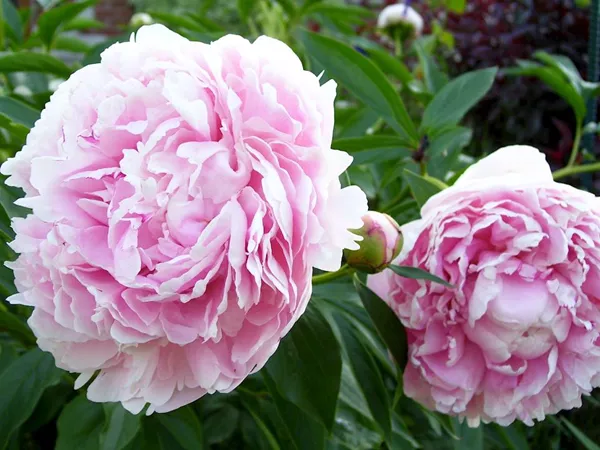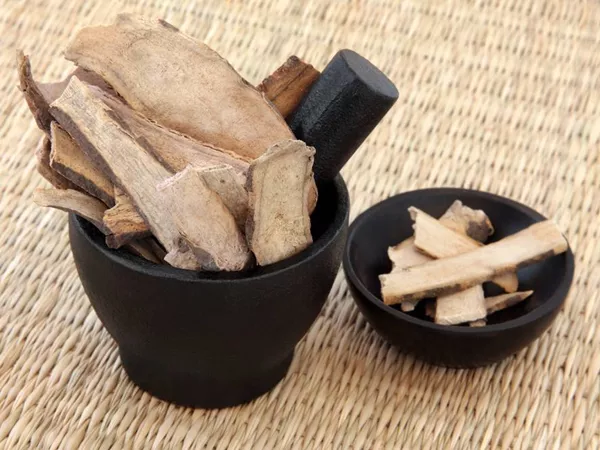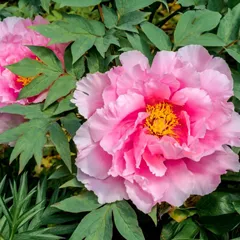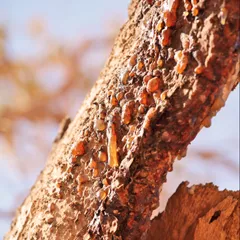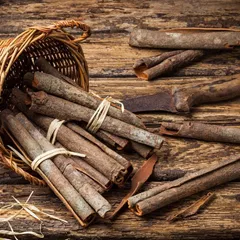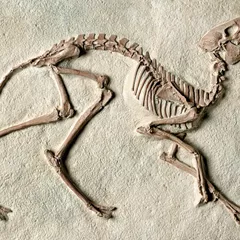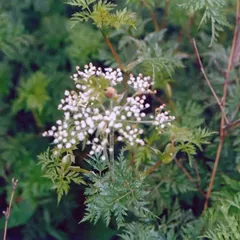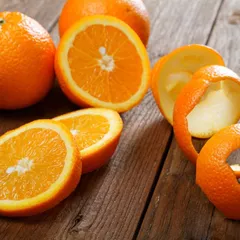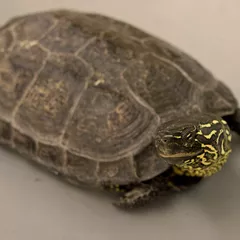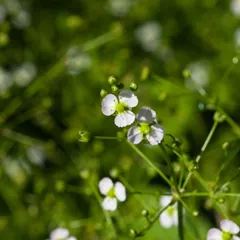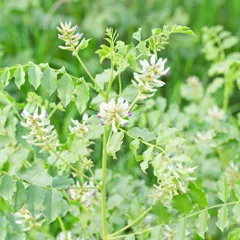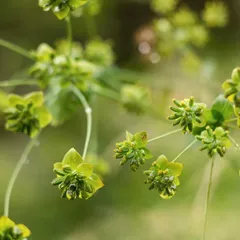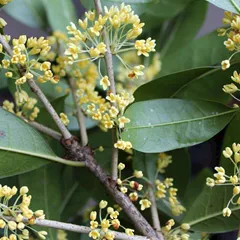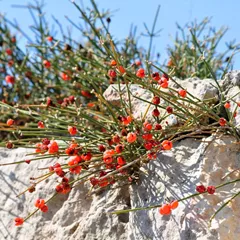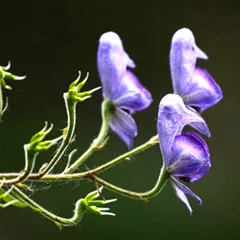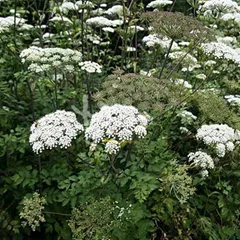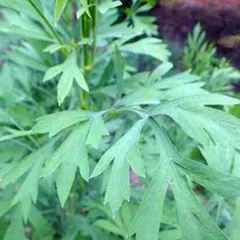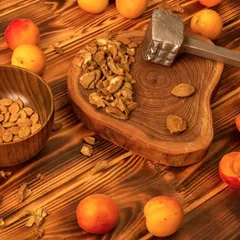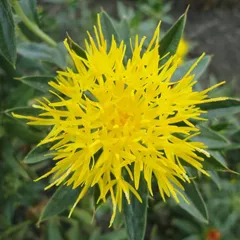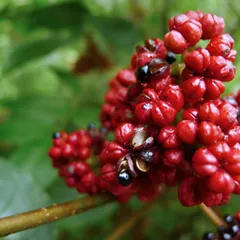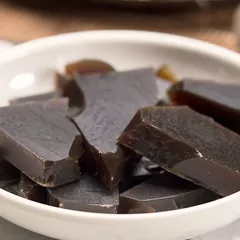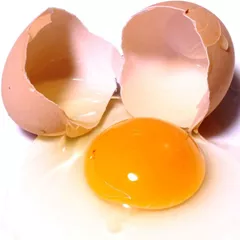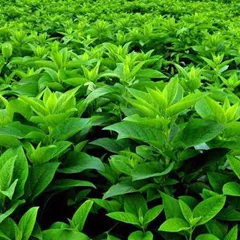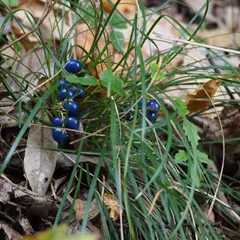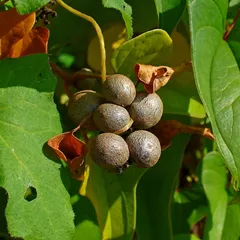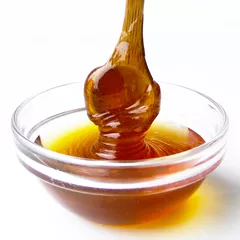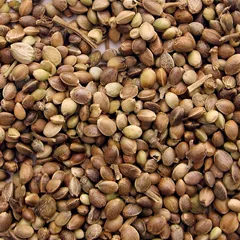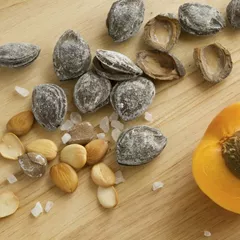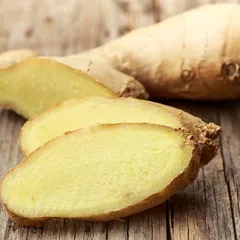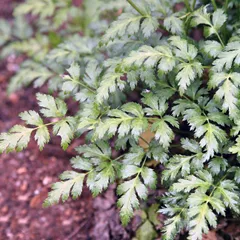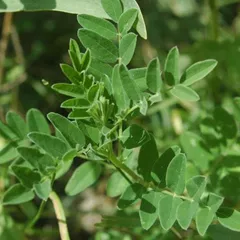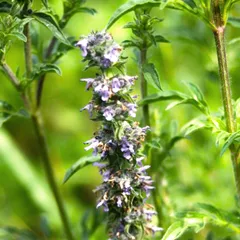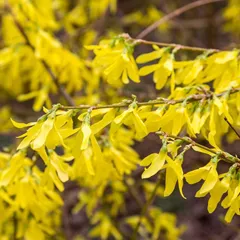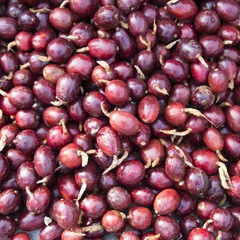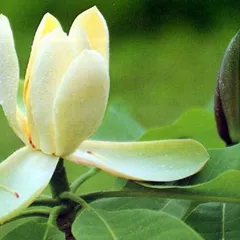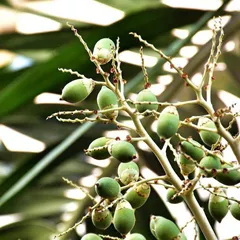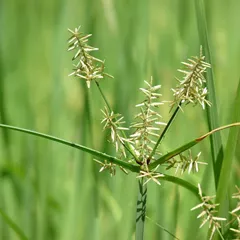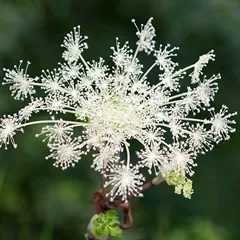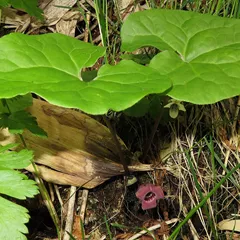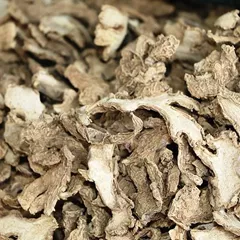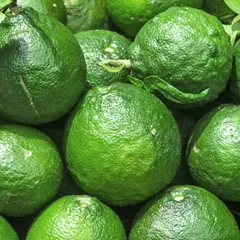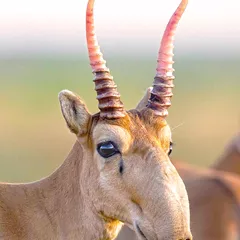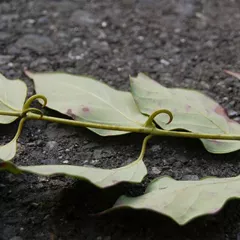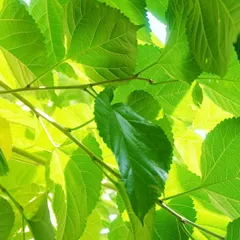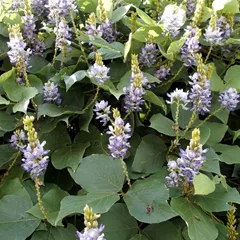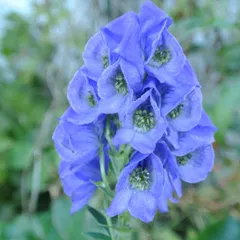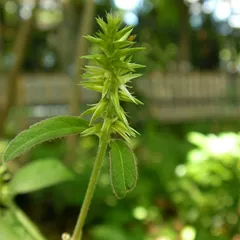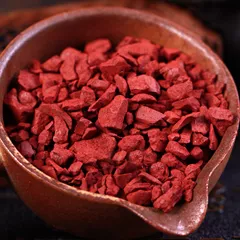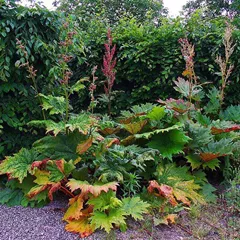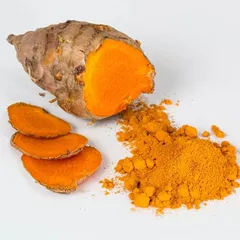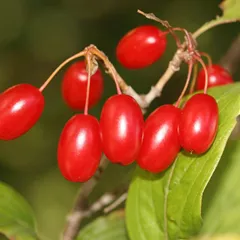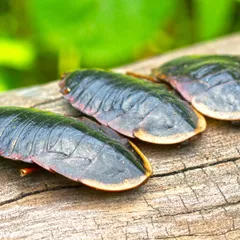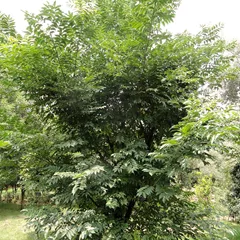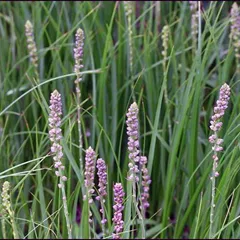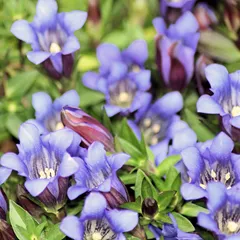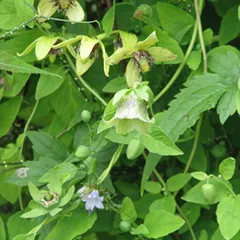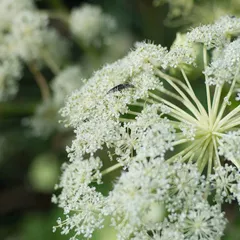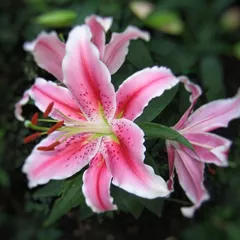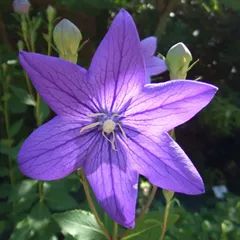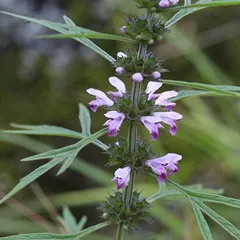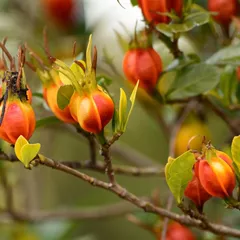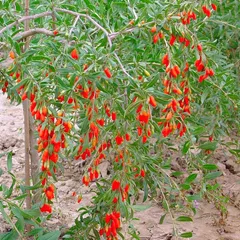Bai Shao
Bai Shao
English: White peony roots
Chinese: 白芍
Use of Bai Shao (white peony roots) in TCM
Please note that you should never self-prescribe TCM ingredients. A TCM ingredient is almost never eaten on its own but as part of a formula containing several ingredients that act together. Please consult a professional TCM practitioner, they will be best able to guide you.
Preparation: Wash, remove head and tail and smaller roots, cook in boiling water, remove skin or peel, dry.
Dosage: 3 - 12 grams
Main actions according to TCM*: Tonifies the Blood and preserves the Yin. Nourishes the Liver and assists in the smooth flow of Qi. Regulates the meridians and eases the pain.
Primary conditions or symptoms for which Bai Shao may be prescribed by TCM doctors*: Headache Abdominal pain Spasmodic pain Anemia Irregular menstruation Night sweats
Contraindications*: This herb should not be used by those with diarrhea and Spleen and Stomach Deficiency.
Common TCM formulas in which Bai Shao is used*
Si Wu Tang
Source date: 846 AD
Number of ingredients: 4 herbs
Formula key actions: Restores and nourishes Blood. Stimulates Blood circulation.
Conditions targeted*: Menstrual crampsIrregular menstruation and others
Bai Shao is a king ingredient in Si Wu Tang. Like the name indicates, it means it has more power than other ingredients in the formula.
In Si Wu Tang, Bai Shao helps reduce the muscle spasms caused by Blood-Deficiency and it is particularly well-suited to treat abdominal pain. Together with Prepared rehmannia (Shu Di huang), it has a strong tonifying effect on the Blood.
Xuan Yu Tong Jing Tang
Source date: 1826 AD
Number of ingredients: 10 herbs
Formula key actions: Pacifies the Liver. Removes Stagnation. Drains Fire. Unblocks the Meridians.
Bai Shao is a king ingredient in Xuan Yu Tong Jing Tang. Like the name indicates, it means it has more power than other ingredients in the formula.
In Xuan Yu Tong Jing Tang, Bai Shao enters the Liver and Spleen. It nourishes the Blood, pacifies the Liver and relieves spasmodic abdominal pain. It is also able to unblock the Blood vessels and promote water metabolism.
Ren Shen Yang Rong Tang
Source date: 1174 AD
Number of ingredients: 14 herbs
Formula key actions: Tonifies Qi and Blood. Nourishes the Heart. Calms the spirit.
Conditions targeted*: AnemiaNonhealing ulcers and others
Bai Shao is a king ingredient in Ren Shen Yang Rong Tang. Like the name indicates, it means it has more power than other ingredients in the formula.
In Ren Shen Yang Rong Tang, Bai Shao is sour and cooling. It enters the Spleen to nourish the Blood and restrain the Yang.
Xiao Tiao Jing Tang
Source date: 1742 AD
Number of ingredients: 7 herbs
Formula key actions: Remove Blood Stagnation. Nourishes Blood. Calms the Mind.
Bai Shao is a king ingredient in Xiao Tiao Jing Tang. Like the name indicates, it means it has more power than other ingredients in the formula.
In Xiao Tiao Jing Tang, Bai Shao nourishes Blood.
Gui Zhi Jia Long Gu Mu Li Tang
Source date: 220 AD
Number of ingredients: 7 herbs
Formula key actions: Rectifies relationship between Yin and Yang. Harmonizes Heart and Kidney. Stabilizes and secures Essence.
Conditions targeted*: EnuresisUrinary incontinence and others
Bai Shao is a king ingredient in Gui Zhi Jia Long Gu Mu Li Tang. Like the name indicates, it means it has more power than other ingredients in the formula.
Shen Qi Si Wu Tang
Source date: 846 AD
Number of ingredients: 6 herbs
Formula key actions: Restores and nourishes Blood. Stimulates Blood circulation. Tonifies Qi.
Bai Shao is a king ingredient in Shen Qi Si Wu Tang. Like the name indicates, it means it has more power than other ingredients in the formula.
In Shen Qi Si Wu Tang, Bai Shao helps reduce the muscle spasms caused by Blood Deficiency and it is particularly well-suited to treat abdominal pain. Together with Prepared rehmannia (Shu Di huang), it has a strong tonifying effect on the Blood.
Shu Jing Huo Xue Tang
Source date: 1587 AD
Number of ingredients: 16 herbs
Formula key actions: Expels Wind Damp from the Channels. Invigorates Blood. Unblocks the channels.
Conditions targeted*: ArthralgiaBell's palsy and others
Bai Shao is a king ingredient in Shu Jing Huo Xue Tang. Like the name indicates, it means it has more power than other ingredients in the formula.
In Shu Jing Huo Xue Tang, Bai Shao helps reduce the muscle spasms caused by Blood Deficiency and it is particularly well-suited to treat abdominal pain.
Bu Gan Tang
Source date: 1742 AD
Number of ingredients: 7 herbs
Formula key actions: Tonifies and regulates the Blood. Nourishes the Liver Yin.
Conditions targeted*: PhotophobiaAnemia and others
Bai Shao is a king ingredient in Bu Gan Tang. Like the name indicates, it means it has more power than other ingredients in the formula.
In Bu Gan Tang, Bai Shao helps reduce the muscle spasms caused by Blood Deficiency and it is particularly well-suited to treat abdominal pain. Together with Prepared rehmannia (Shu Di huang), it has a strong tonifying effect on the Blood.
Tong Xie Yao Fang
Source date: 1481 AD
Number of ingredients: 4 herbs
Formula key actions: Tonifies the Spleen. Softens the Liver. Expels Dampness. Stops diarrhea.
Conditions targeted*: ColitisIngestion in children and others
Bai Shao is a king ingredient in Tong Xie Yao Fang. Like the name indicates, it means it has more power than other ingredients in the formula.
In Tong Xie Yao Fang, Bai Shao softens the overactive Liver and alleviates pain.
The combination of Atractylodes rhizome and White peony root works very well in controlling Wood and nurture the Earth. This stops the pain and diarrhea linked with this condition.
Gu Jing Wan
Source date: 1481 AD
Number of ingredients: 6 herbs
Formula key actions: Nourishes Yin . Clears Heat. Stops bleeding. Stabilizes the menses.
Conditions targeted*: Dysfunctional uterine bleedingChronic pelvic inflammatory disease and others
Bai Shao is a king ingredient in Gu Jing Wan. Like the name indicates, it means it has more power than other ingredients in the formula.
In Gu Jing Wan, Bai Shao is sour, bitter, and cooling. It preserves the Yin and nourishes the Blood.
The combination of key and deputy herbs controls the Fire (yang) by directing it downward, as well as by fortifying the water (Yin) itself.
Dang Gui Shao Yao San
Source date: 220 AD
Number of ingredients: 7 herbs
Formula key actions: Nourishes the Liver Blood. Spreads the Liver Qi. Strengthens the Spleen. Resolves Dampness.
Conditions targeted*: Perimenstrual migrainesEndometritis and others
Bai Shao is a king ingredient in Dang Gui Shao Yao San. Like the name indicates, it means it has more power than other ingredients in the formula.
In Dang Gui Shao Yao San, Bai Shao is sour, bitter, and slightly cooling. It enters the Liver and Spleen, nourishes Blood, softens the Liver and moderates spasmodic abdominal pain.
It is also able to unblock the Blood vessels and promote water metabolism.
The combination of Bai Shao and Bai Zhu is often used in treating concurrent problems of the Liver and Spleen. This is because tonifying the Spleen as the source of postnatal Qi also tonifies the Liver Qi, while softening the Liver prevents its Qi from overacting on the Spleen.
Shao Yao Gan Cao Tang
Source date: 220 AD
Number of ingredients: 2 herbs
Formula key actions: Nourishes the Blood and augments the Yin. Moderates painful spasms. Alleviates pain.
Conditions targeted*: Ligament spasm painTissue spam pain and others
Bai Shao is a king ingredient in Shao Yao Gan Cao Tang. Like the name indicates, it means it has more power than other ingredients in the formula.
In Shao Yao Gan Cao Tang, Bai Shao nourishes the Blood and preserves the Yin. It enters the Spleen,
softens the Liver, and alleviates pain. It thereby addresses the
primary aspects of spams condition.
The Liver is a hard, 'edgy' organ, and its Qi has a tendency to rebel transversely. This herb is effective in moderating the wayward inclinations of the Liver Qi, especially when it overacts on the Spleen. It also preserves the Liver Yin by 'softening of the
Liver.'
Jia Wei Xiao Yao San
Source date: Ming dynasty
Number of ingredients: 10 herbs
Formula key actions: Clears Liver and Spleen Qi Stagnation. Tonifies Spleen. Clears Deficient Heat. Nourishes the blood.
Conditions targeted*: InfertilityMenorrhagia and others
Bai Shao is a deputy ingredient in Jia Wei Xiao Yao San. This means it helps the king ingredient(s) treat the main pattern or it serves to treat a coexisting pattern.
In Jia Wei Xiao Yao San, Bai Shao moves Qi and is specific for menstrual problems, especially from emotional stress.
Xiao Yao San
Source date: 1107 AD
Number of ingredients: 6 herbs
Formula key actions: Harmonizes the function of Liver and Spleen. Relieves Liver Qi stagnation. Nourishes the Blood.
Conditions targeted*: HepatitisCholecystitis and others
Bai Shao is a deputy ingredient in Xiao Yao San. This means it helps the king ingredient(s) treat the main pattern or it serves to treat a coexisting pattern.
In Xiao Yao San, Bai Shao moves Qi and is specific for menstrual problems, especially from emotional stress.
Gui Zhi Shao Yao Zhi Mu Tang
Source date: 220 AD
Number of ingredients: 9 herbs
Formula key actions: Clears Heat and inflammations. Unblocks the flow of Yang Qi and promotes movement (in areas with painful obstruction). Clears Wind and Damp. Relieves pain.
Conditions targeted*: Rheumatoid arthritisConnective tissue disorders and others
Bai Shao is a deputy ingredient in Gui Zhi Shao Yao Zhi Mu Tang. This means it helps the king ingredient(s) treat the main pattern or it serves to treat a coexisting pattern.
Juan Bi Tang
Source date: 1178 AD
Number of ingredients: 9 herbs
Formula key actions: Tonifies and harmonizes the Protective and Nutritive Qi. Dispels Wind. Eliminates Dampness.
Conditions targeted*: Periarthritis of the shoulderRheumatoid arthritis and others
Bai Shao is a deputy ingredient in Juan Bi Tang. This means it helps the king ingredient(s) treat the main pattern or it serves to treat a coexisting pattern.
Tao Hong Si Wu Tang
Source date: 1291 AD
Number of ingredients: 6 herbs
Formula key actions: Tonifies Blood and regulates the Liver. Moves Qi and Blood in the lower abdomen. Stops pain.
Conditions targeted*: Scanty menstruationPainful menstruations and others
Bai Shao is a deputy ingredient in Tao Hong Si Wu Tang. This means it helps the king ingredient(s) treat the main pattern or it serves to treat a coexisting pattern.
In Tao Hong Si Wu Tang, Bai Shao tonifies the blood and preserves the Yin. Its sour and astringent character helps to settle the muscle spasms caused by Blood Deficiency, and it is particularly well-suited to treat abdominal pain.
Wen Jing Tang
Source date: 220 AD
Number of ingredients: 12 herbs
Formula key actions: Warms the Uterus and vessels. Nourishes Blood. Dispels Cold. Dispels Blood Stagnation.
Conditions targeted*: Dysfunctional uterine bleedingUterine hypoplasia and others
Bai Shao is a deputy ingredient in Wen Jing Tang. This means it helps the king ingredient(s) treat the main pattern or it serves to treat a coexisting pattern.
In Wen Jing Tang, Bai Shao nourishes and invigorates Blood, which is necessary because the obstruction of the Uterus by Cold prevents new Blood from taking its proper place there. It also regulates the menstruation, tonifies the Yin and regulates the Liver.
E Jiao Ji Zi Huang Tang
Source date: the Qing dynasty
Number of ingredients: 10 herbs
Formula key actions: Nourishes Yin. Nourishes Blood. Calms the Liver. Extinguishes Wind.
Conditions targeted*: EncephalitisMeningitis and others
Bai Shao is a deputy ingredient in E Jiao Ji Zi Huang Tang. This means it helps the king ingredient(s) treat the main pattern or it serves to treat a coexisting pattern.
In E Jiao Ji Zi Huang Tang, Bai Shao calms the Liver to extinguish Wind. The combination of Bai Shao and Gan Cao (Liquorice) is very effective in treating painful spasms.
Yang Yin Qing Fei Tang
Source date: the 18th century
Number of ingredients: 8 herbs
Formula key actions: Nourishes the Yin. Improves throat. Resolves toxicity. Clears the Lungs.
Conditions targeted*: DiphtheriaTonsillitis and others
Bai Shao is a deputy ingredient in Yang Yin Qing Fei Tang. This means it helps the king ingredient(s) treat the main pattern or it serves to treat a coexisting pattern.
In Yang Yin Qing Fei Tang, Bai Shao preserves and protects the Yin. Chuan Bei Mu (Fritillary bulbs), Mu Dan Pi (Mudan peony bark) and Bai Shao (White peony root) together disperse the swelling in the throat and stops the pain.
Ba Zhen Tang
Source date: 1326 AD
Number of ingredients: 10 herbs
Formula key actions: Tonifies and augments Qi. Tonifies and augments Blood.
Conditions targeted*: AnemiaHepatitis and others
Bai Shao is a deputy ingredient in Ba Zhen Tang. This means it helps the king ingredient(s) treat the main pattern or it serves to treat a coexisting pattern.
In Ba Zhen Tang, Bai Shao nourishes Blood and helps reinforcing the action of the king ingredient Shu Di Huang (Prepared rehmannia).
Wan Dai Tang
Source date: 1826 AD
Number of ingredients: 10 herbs
Formula key actions: Tonifies the Middle Burner. Removes Dampness. Stops vaginal discharge. Strengthens the Spleen.
Conditions targeted*: PreeclampsiaOtitis media and others
Bai Shao is a deputy ingredient in Wan Dai Tang. This means it helps the king ingredient(s) treat the main pattern or it serves to treat a coexisting pattern.
In Wan Dai Tang, Bai Shao softens the Liver and regulates the Spleen. It allows the Liver Qi to spread in a manner that it strengthens rather than constrains Spleen function.
Xiao Jian Zhong Tang
Source date: 220 AD
Number of ingredients: 6 herbs
Formula key actions: Warms and tonifies the Middle Burner (Spleen and Stomach). Tonifies Qi. Relieves spasmodic pain.
Conditions targeted*: Chronic gastritisPeptic ulcers and others
Bai Shao is a deputy ingredient in Xiao Jian Zhong Tang. This means it helps the king ingredient(s) treat the main pattern or it serves to treat a coexisting pattern.
In Xiao Jian Zhong Tang, Bai Shao benefits the Yin with its sweet and sour taste.
Dang Gui Si Ni Tang
Source date: 220 AD
Number of ingredients: 7 herbs
Formula key actions: Warms the Channels. Disperses Cold. Nourishes the Blood. Unblocks the Blood vessels.
Conditions targeted*: Vascular headacheRaynaud's disease and others
Bai Shao is a deputy ingredient in Dang Gui Si Ni Tang. This means it helps the king ingredient(s) treat the main pattern or it serves to treat a coexisting pattern.
In Dang Gui Si Ni Tang, Bai Shao strengthens the key ingredient Dong Quai's Blood tonifying effect. In addition, together with Cinnamon twigs, they harmonize the protective and nutritive Qi so as to eliminate Cold from the more superficial levels of the body.
Ma Zi Ren Wan
Source date: 220 AD
Number of ingredients: 7 herbs
Formula key actions: Moistens the Intestines. Invigorates Qi. Unblocks the bowels. Drains Heat.
Conditions targeted*: Incomplete intestinal obstructionPostoperative ileus and others
Bai Shao is a deputy ingredient in Ma Zi Ren Wan. This means it helps the king ingredient(s) treat the main pattern or it serves to treat a coexisting pattern.
In Ma Zi Ren Wan, Bai Shao is bitter, sour, and slightly cold. It enters the Spleen, nourishes the Yin and harmonizes the interior.
Gui Zhi Tang
Source date: 220 AD
Number of ingredients: 5 herbs
Formula key actions: Releases pathogens from the muscle layer. Regulates the Nutritive and Protective Qi.
Conditions targeted*: Common coldInfluenza and others
Bai Shao is a deputy ingredient in Gui Zhi Tang. This means it helps the king ingredient(s) treat the main pattern or it serves to treat a coexisting pattern.
In Gui Zhi Tang, Bai Shao benefits the Yin and contains the weak nutritive Qi. Together with Gui Zhi it enhances the ability of the Protective Qi to dispel pathogens while strengthening the Nutritive Qi.
Huang Lian E Jiao Tang
Source date: 220 AD
Number of ingredients: 5 herbs
Formula key actions: Enriches the Yin. Causes Fire to descend. Eliminates irritability. Calms the spirit.
Conditions targeted*: Nervous exhaustionAutonomic dystonia and others
Bai Shao is a deputy ingredient in Huang Lian E Jiao Tang. This means it helps the king ingredient(s) treat the main pattern or it serves to treat a coexisting pattern.
In Huang Lian E Jiao Tang, Bai Shao enriches and retains the Yin to harmonize the functions of the Qi
Huang Qi Jian Zhong Tang
Source date: 220 AD
Number of ingredients: 7 herbs
Formula key actions: Warms and tonifies the Middle Burner (Spleen and Stomach). Tonifies Qi. Relieves spasmodic pain.
Conditions targeted*: Gastric ulcerGastralgia and others
Bai Shao is a deputy ingredient in Huang Qi Jian Zhong Tang. This means it helps the king ingredient(s) treat the main pattern or it serves to treat a coexisting pattern.
In Huang Qi Jian Zhong Tang, Bai Shao benefits the Yin with its sweet and sour taste.
Jing Jie Lian Qiao Tang
Source date: 1773 AD
Number of ingredients: 12 herbs
Formula key actions: Dispels Wind. Clears toxic-Heat. Disperses Stagnation.
Conditions targeted*: RhinitisTonsillitis and others
Bai Shao is a deputy ingredient in Jing Jie Lian Qiao Tang. This means it helps the king ingredient(s) treat the main pattern or it serves to treat a coexisting pattern.
In Jing Jie Lian Qiao Tang, Bai Shao helps the formula in treating the Heat disorders that center around the Lesser Yang Channels.
Da Yuan Yin
Source date: 1642 AD
Number of ingredients: 7 herbs
Formula key actions: Opens the membrane source by thrusting out pathogens. Clears away filth. Transforms turbidity.
Conditions targeted*: MalariaInfluenza and others
Bai Shao is a deputy ingredient in Da Yuan Yin. This means it helps the king ingredient(s) treat the main pattern or it serves to treat a coexisting pattern.
In Da Yuan Yin, Bai Shao prevents the acrid, drying properties of the other herbs from damaging the Yin and Blood.
Shao Yao Tang
Source date: 1186 AD
Number of ingredients: 9 herbs
Formula key actions: Regulates and harmonizes the Qi and Blood. Clears Heat. Dries dampness. Resolves Toxicity.
Conditions targeted*: Acute enteritisUlcerative colitis and others
Bai Shao is a deputy ingredient in Shao Yao Tang. This means it helps the king ingredient(s) treat the main pattern or it serves to treat a coexisting pattern.
In Shao Yao Tang, Bai Shao is used in a large dose to move the Blood, expel the pus, relax urgency, and stop the Pain.
Together with Blood-moving herb Dong Quai, it regulates the nutritive Qi and Blood, following the principle that: When the Blood moves, pus in the stools is naturally healed.
Together with Liquorice, it also moderates the spasms and relieves abdominal pain.
Huang Qin Tang
Source date: 220 AD
Number of ingredients: 4 herbs
Formula key actions: Clears Heat. Alleviates dysenteric disorders. Stops pain . Harmonizes the Middle Burner.
Conditions targeted*: Bacillary dysenteryAcute colitis and others
Bai Shao is a deputy ingredient in Huang Qin Tang. This means it helps the king ingredient(s) treat the main pattern or it serves to treat a coexisting pattern.
In Huang Qin Tang, Bai Shao drains Heat from the Middle Burner, while its sourness astringes and contains the Yin.
White peony root with Liquorice is also forms a synergistic pairing that is specific for abdominal cramping and pain.
Huang Qi Gui Zhi Wu Wu Tang
Source date: 220 AD
Number of ingredients: 5 herbs
Formula key actions: Augments the Qi. Warms and harmonizes the channels. Unblocks painful obstruction .
Conditions targeted*: PolyneuritisScleroderma and others
Bai Shao is a deputy ingredient in Huang Qi Gui Zhi Wu Wu Tang. This means it helps the king ingredient(s) treat the main pattern or it serves to treat a coexisting pattern.
In Huang Qi Gui Zhi Wu Wu Tang, Bai Shao nourishes the Blood, harmonizes the nutritive Qi, and unblocks painful obstruction.
In combination with Cinnamon twigs, it harmonizes the Nutritive and Protective Qi.
In combination with Milkvetch root, it firms up the Exterior and nourishes the Yin.
Chai Hu Shu Gan San
Source date: 1602
Number of ingredients: 7 herbs
Formula key actions: Disperses Stagnant Liver Qi and Blood. Alleviates pain. Harmonizes Blood.
Conditions targeted*: HepatitisChronic gastritis and others
Bai Shao is an assistant ingredient in Chai Hu Shu Gan San. This means that it either serves to reinforces the effect of other ingredients or it moderates their toxicity.
In Chai Hu Shu Gan San, Bai Shao acts to nourish the Blood, together with Liquorice another assistant. This softens the Liver (which, according to Chinese medicine, stores the Blood) which helps stop the pain.
Zhen Wu Tang
Source date: 220 AD
Number of ingredients: 5 herbs
Formula key actions: Warms and tonifies the Yang and Qi of the Spleen and Kidneys. Eliminates Dampness.
Conditions targeted*: Congestive heart failureChronic glomerulonephritis and others
Bai Shao is an assistant ingredient in Zhen Wu Tang. This means that it either serves to reinforces the effect of other ingredients or it moderates their toxicity.
In Zhen Wu Tang, Bai Shao preserves the Yin and alleviates pain. It prevents the dry, hot herbs that promote urination from injuring the Yin.
Fu Zi Tang
Source date: 220 AD
Number of ingredients: 5 herbs
Formula key actions: Warms the Meridians. Assists the Yang. Dispels Cold. Transforms Dampness.
Conditions targeted*: MigraineCluster headache and others
Bai Shao is an assistant ingredient in Fu Zi Tang. This means that it either serves to reinforces the effect of other ingredients or it moderates their toxicity.
In Fu Zi Tang, Bai Shao complements the actions of the key herb, Prepared aconite (Zhi Fu Zi) because it is cooling and restrains the Yin. Nourishing the Yin provides a substratum to which the Yang generated by Prepared aconite can attach itself, keeping it in the Interior and preventing it from dissipating to the Exterior.
Du Huo Ji Sheng Tang
Source date: 650 AD
Number of ingredients: 15 herbs
Formula key actions: Anti-rheumatic, clears Wind, Cold and Damp Stagnation. Strengthens the function of the Liver and Kidney. Tonifies Qi and Blood.
Conditions targeted*: Chronic lower back painSciatica and others
Bai Shao is an assistant ingredient in Du Huo Ji Sheng Tang. This means that it either serves to reinforces the effect of other ingredients or it moderates their toxicity.
Xiao Qing Long Tang
Source date: 220 AD
Number of ingredients: 8 herbs
Formula key actions: Releases the Exterior. Transforms Phlegm-Fluids. Warms the Lungs. Directs Rebellious Qi downward.
Conditions targeted*: Upper respiratory tract infectionsBronchitis and others
Bai Shao is an assistant ingredient in Xiao Qing Long Tang. This means that it either serves to reinforces the effect of other ingredients or it moderates their toxicity.
In Xiao Qing Long Tang, Bai Shao nourishes the Blood and nutritive Qi.
Si Ni San
Source date: 220 AD
Number of ingredients: 4 herbs
Formula key actions: Regulates Liver and Spleen. Eliminates Internal Heat.
Conditions targeted*: CholecystitisCholelithiasis and others
Bai Shao is an assistant ingredient in Si Ni San. This means that it either serves to reinforces the effect of other ingredients or it moderates their toxicity.
In Si Ni San, Bai Shao nourishes the Liver and preserves the Yin. Bai Shao holds things in; this is in contrast to the key herb Chai Hu, which disperses. This combination is very effective in disseminating the Liver
Qi without injuring its Yin.
Ling Jiao Gou Teng Tang
Source date: Qing dynasty
Number of ingredients: 10 herbs
Formula key actions: Cools the Liver. Extinguishes Wind. Increases Fluids. Relaxes the sinews.
Conditions targeted*: EncephalitisMeningitis and others
Bai Shao is an assistant ingredient in Ling Jiao Gou Teng Tang. This means that it either serves to reinforces the effect of other ingredients or it moderates their toxicity.
In Ling Jiao Gou Teng Tang, Bai Shao nourishes the Yin and increases the Fluids and thereby softens the Liver and relaxes the sinews.
Ge Gen Tang
Source date: 220 AD
Number of ingredients: 7 herbs
Formula key actions: Releases the Exterior and muscle layer. Forms Body Fluids.
Conditions targeted*: Common coldCervical spine disease and others
Bai Shao is an assistant ingredient in Ge Gen Tang. This means that it either serves to reinforces the effect of other ingredients or it moderates their toxicity.
In Ge Gen Tang, Bai Shao prevents the Exterior releasing herbs from creating too much sweating so as to protect Yin. Together with Cinnamon twigs, it invigorates the Protective (Wei Qi) and Nutritive Qi (Rong Qi) and helps expelling any Pernicious Influences.
Wu Tou Tang
Source date: 220 AD
Number of ingredients: 6 herbs
Formula key actions: Warms the channels and remove obstruaction. Disperse Cold and Dampness. Warms the joints. Relieve joints pain.
Conditions targeted*: Joint painJoint stiffness and others
Bai Shao is an assistant ingredient in Wu Tou Tang. This means that it either serves to reinforces the effect of other ingredients or it moderates their toxicity.
In Wu Tou Tang, Bai Shao helps reduce the muscle spasms caused by Blood Deficiency and Stagnation.
Da Fang Feng Tang
Source date: 1107 AD
Number of ingredients: 14 herbs
Formula key actions: Expel Wind Damp. Relieve pain. Tonify the Liver and the Kidneys. Tonify the Blood and Qi.
Conditions targeted*: ArthralgiaCommon cold and others
Bai Shao is an assistant ingredient in Da Fang Feng Tang. This means that it either serves to reinforces the effect of other ingredients or it moderates their toxicity.
In Da Fang Feng Tang, Bai Shao invigorates and tonifies Blood at the same time. It is one of the four ingredients for the formula Si Wu Tang which is commonly use for Blood tonifying and invigorating purpose.
Zhen Gan Xi Feng Tang
Source date: 1918 AD
Number of ingredients: 12 herbs
Formula key actions: Sedates the Liver. Axtinguishes Wind. Nourishes the Yin. Anchors the yang.
Conditions targeted*: HypertensionRenal hypertension and others
Bai Shao is an assistant ingredient in Zhen Gan Xi Feng Tang. This means that it either serves to reinforces the effect of other ingredients or it moderates their toxicity.
In Zhen Gan Xi Feng Tang, Bai Shao clears Heat, nourishes the Yin, and enriches the Fluids. This treats the ascendant Liver Yang at the root, which indirectly extinguishes the Wind.
Da Chai Hu Tang
Source date: 220 AD
Number of ingredients: 8 herbs
Formula key actions: Harmonizes and releases the Lesser Yang. Drains internal clumping due to Heat.
Conditions targeted*: CholecystitisCholelithiasis and others
Bai Shao is an assistant ingredient in Da Chai Hu Tang. This means that it either serves to reinforces the effect of other ingredients or it moderates their toxicity.
In Da Chai Hu Tang, Bai Shao relaxes urgency and stops pain. Together with Immature Bitter Orange and Rhubarb, it treats the abdominal pain from Excess.
Pai Shi Tang
Number of ingredients: 10 herbs
Formula key actions: Discharge Gallstones. Clear Damp-Heat. Facilitate urination.
Conditions targeted*: Hepatic calculusCommon Bile Duct Stone and others
Bai Shao is an assistant ingredient in Pai Shi Tang. This means that it either serves to reinforces the effect of other ingredients or it moderates their toxicity.
In Pai Shi Tang, Bai Shao nourishes the Liver and assists in the smooth flow of Liver Qi. It also regulates the Meridians, eases associated pain, tonifies the Blood and preserves the Yin.
Zai Zao San
Source date: 1445 AD
Number of ingredients: 12 herbs
Formula key actions: Tonfies the Yang . Augments the Qi. Induces sweating. Releases the Exterior.
Conditions targeted*: Rheumatic feverCommon cold and others
Bai Shao is an assistant ingredient in Zai Zao San. This means that it either serves to reinforces the effect of other ingredients or it moderates their toxicity.
In Zai Zao San, Bai Shao regulates the protective and nutritive Qi, similar to its use in Gui Zhi Tang. It moderates the warm and drying
properties of the other herbs without interfering their ability to induce sweating.
Chai Ge Jie Ji Tang
Source date: 1445 AD
Number of ingredients: 11 herbs
Formula key actions: Releases pathogenic evils from the muscle layer . Clears Interior Heat .
Conditions targeted*: Common coldInfluenza and others
Bai Shao is an assistant ingredient in Chai Ge Jie Ji Tang. This means that it either serves to reinforces the effect of other ingredients or it moderates their toxicity.
In Chai Ge Jie Ji Tang, Bai Shao is sour and cold. It preserves the Yin by preventing the Exterior-releasing herbs from causing excessive sweating.
Gu Chong Tang
Source date: 1918-1934
Number of ingredients: 10 herbs
Formula key actions: Augments Qi . Strengthens the Spleen. Stabilizes the Penetrating Vessel. Stops bleeding.
Conditions targeted*: Dysfunctional uterine bleedingPostpartum bleeding and others
Bai Shao is an assistant ingredient in Gu Chong Tang. This means that it either serves to reinforces the effect of other ingredients or it moderates their toxicity.
In Gu Chong Tang, Bai Shao treats the instability of the Penetrating Vessel and the injury to the Yin and Blood from chronic blood loss.
It nourishes the Yin and Blood of the Liver and Kidneys and exerts an astringent, binding effect on the Blood.
Da Huang Zhe Chong Wan
Source date: 220 AD
Number of ingredients: 12 herbs
Formula key actions: Breaks up and dispels Blood Stagnation. Generates new Blood .
Conditions targeted*: Chronic hepatitisAlcoholic liver disease and others
Bai Shao is an assistant ingredient in Da Huang Zhe Chong Wan. This means that it either serves to reinforces the effect of other ingredients or it moderates their toxicity.
In Da Huang Zhe Chong Wan, Bai Shao nourish the Blood and Yin.
San Zhong Kui Jian Tang
Source date: 1336 AD
Number of ingredients: 17 herbs
Formula key actions: Clears Heat and resolves Toxicity. Reduces swelling. Induces ulceration. Moves the Blood and dispels stasis .
Conditions targeted*: GoiterScrofula and others
Bai Shao is an assistant ingredient in San Zhong Kui Jian Tang. This means that it either serves to reinforces the effect of other ingredients or it moderates their toxicity.
In San Zhong Kui Jian Tang, Bai Shao softens the Liver and nourishes the Blood, thus helping Dong quai to protect the body's Blood Yin. By softening the Liver, it also addresses Liver fire, which is often a contributing factor or main cause of the types of swellings this formula treats.
An Tai Zhu Gao
Source date: 1879 AD
Number of ingredients: 14 herbs
Formula key actions: Strengthens the Qi and Blood. Tonifies the Liver and Kidneys. Calms the fetus.
Conditions targeted*: Restless fetus and others
Bai Shao is an assistant ingredient in An Tai Zhu Gao. This means that it either serves to reinforces the effect of other ingredients or it moderates their toxicity.
In An Tai Zhu Gao, Bai Shao tonifies the Blood and preserves the Yin. It also nourishes the Liver and assists in the smooth flow of Qi.
Wu Ji San
Source date: 846 AD
Number of ingredients: 15 herbs
Formula key actions: Releases the Exterior. Warms the Interior. Smoothes the flow of Qi. Transforms Phlegm. Invigorates the Blood. Reduces Stagnation.
Conditions targeted*: BronchiolitisSciatica and others
Bai Shao is an assistant ingredient in Wu Ji San. This means that it either serves to reinforces the effect of other ingredients or it moderates their toxicity.
In Wu Ji San, Bai Shao nourishes and invigorates the Blood.
Fang Feng Tong Sheng San
Source date: 1172 AD
Number of ingredients: 17 herbs
Formula key actions: Disperses Wind. Releases the Exterior. Drains Heat. Unblocks the bowels.
Conditions targeted*: Common coldHypertension and others
Bai Shao is an assistant ingredient in Fang Feng Tong Sheng San. This means that it either serves to reinforces the effect of other ingredients or it moderates their toxicity.
In Fang Feng Tong Sheng San, Bai Shao harmonize the Blood, which helps to disperse Wind.
Sheng Yang Yi Wei Tang
Source date: 1247 AD
Number of ingredients: 16 herbs
Formula key actions: Strengthens the Spleen. Augments the Qi. Raises the Yang. Releases Dampness.
Conditions targeted*: Atrophic gastritisChronic pelvic inflammatory disease and others
Bai Shao is an assistant ingredient in Sheng Yang Yi Wei Tang. This means that it either serves to reinforces the effect of other ingredients or it moderates their toxicity.
In Sheng Yang Yi Wei Tang, Bai Shao nourishes and cools the Blood to remove Heat from a deeper part of the physiological function.
It also balances the warming, drying, and dispersing nature of the Wind-dispersing herbs in the formula.
Guo Qi Yin
Source date: 1602 AD
Number of ingredients: 11 herbs
Formula key actions: Warms the menses. Dispels blood Stagnation. Nourishes the blood .
Conditions targeted*: Irregular menstruationDysmenorrhea and others
Bai Shao is an assistant ingredient in Guo Qi Yin. This means that it either serves to reinforces the effect of other ingredients or it moderates their toxicity.
In Guo Qi Yin, Bai Shao softens the Liver and moderates the pain.
Cold contributes to the Blood Stagnation and intensifies Blood Stagnation by causing the vessels to contract.
Ming Mu Di Huang Wan
Source date: 1642 AD
Number of ingredients: 12 herbs
Formula key actions: Nourishes the Liver. Enriches the Kidneys. Improves the vision.
Bai Shao is an assistant ingredient in Ming Mu Di Huang Wan. This means that it either serves to reinforces the effect of other ingredients or it moderates their toxicity.
In Ming Mu Di Huang Wan, Bai Shao nourishes the Blood to support Yin and suppress Liver Yang Rising. It also soothes the Liver to relieve pain.
Bai He Gu Jin Tang
Source date: 1573 AD
Number of ingredients: 10 herbs
Formula key actions: Nourishes Lung and Kidney Yin. Lubricates the Lung and clears phlegm.
Conditions targeted*: Chronic bronchitisChronic pharyngitis and others
In Bai He Gu Jin Tang, Bai Shao , together with Dong quoi, another assistant herb, nourish the Blood to support the Yin. Also they together protect the Lungs from violation thanks to their action of calming the Liver.
Xia Ru Yong Quan San
Source date: 1840 AD
Number of ingredients: 11 herbs
Formula key actions: Nourishes Blood. Increases breast milk supply.
In Xia Ru Yong Quan San, Bai Shao nourishes and invigorates Blood
Tuo Li Xiao Du San
Source date: 1548 AD
Number of ingredients: 11 herbs
Formula key actions: Draws out toxicity. Expels pus from the interior. Tonifies Qi and Blood.
In Tuo Li Xiao Du San, Bai Shao nourishes and invigorates Blood
Qing Re Tiao Xue Tang
Source date: 1576 AD
Number of ingredients: 10 herbs
Formula key actions: Expel Dampness. Relieve pain. Move Qi and Blood.
In Qing Re Tiao Xue Tang, Bai Shao harmonizes Blood
Ba Zhen Yi Mu Tang
Source date: 1624 AD
Number of ingredients: 9 herbs
Formula key actions: Tonifies Qi and Blood. Invigorates the Blood.
Conditions targeted*: Infertility and others
In Ba Zhen Yi Mu Tang, Bai Shao nourishes the Blood and thereby reinforces the action of Prepared rehmannia.
Sheng Yu Tang
Source date: 1336 AD
Number of ingredients: 6 herbs
Formula key actions: Tonifies Qi and Blood. Preserves the Blood.
In Sheng Yu Tang, Bai Shao preserve Yin from other herbs' harm such as Szechuan lovage root and Dong quai.
Dan Zhi Xiao Yao San
Source date: 2002 AD
Number of ingredients: 8 herbs
Formula key actions: Clears Liver Fire from Stagnant Liver Qi.
In Dan Zhi Xiao Yao San, Bai Shao moves Qi and is specific for menstrual issues, especially from emotional stress.
Tiao Gan Tang
Source date: 1827 AD
Number of ingredients: 7 herbs
Formula key actions: Nourishes Kidney and Liver Yin.
In Tiao Gan Tang, Bai Shao nourishes and moves Blood
Gui Shao Di Huang Tang
Source date: 1706 AD
Number of ingredients: 8 herbs
Formula key actions: Nourishes Blood. Nourishes Yin.
In Gui Shao Di Huang Tang, Bai Shao nourishes Blood
Qing Jing San
Source date: 1826 AD
Number of ingredients: 7 herbs
Formula key actions: Clears Blood-Heat. Stops bleeding.
In Qing Jing San, Bai Shao calms Blood to stops bleeding
Liang Di Tang
Source date: 1826 AD
Number of ingredients: 6 herbs
Formula key actions: Nourishes Yin. Cools Blood. Stop bleeding.
In Liang Di Tang, Bai Shao nourishes Blood, which helps to nourish Yin. It also calms Blood and therefore helps to stop bleeding
Di Gu Pi Yin
Source date: 1742 AD
Number of ingredients: 6 herbs
Formula key actions: Clears Heat. Stops bleeding.
In Di Gu Pi Yin, Bai Shao helps reduce the muscle spasms caused by Blood-Deficiency and it is particularly well-suited to treat abdominal pain. Together with Di Huang, it has a strong tonifying effect on the Blood.
Ren Shen Zi Xie Tang
In Ren Shen Zi Xie Tang, Bai Shao nourishes Blood
Shi Quan Da Bu Tang
Source date: 1180 AD
Number of ingredients: 10 herbs
Formula key actions: Warms and tonifies Qi. Warms and tonifies Blood.
Conditions targeted*: AnemiaNervous exhaustion and others
In Shi Quan Da Bu Tang, Bai Shao helps reduce the muscle spasms caused by Blood-Deficiency and it is particularly well-suited to treat abdominal pain. Together with Prepared rehmannia (Shu Di huang), it has a strong tonifying effect on the Blood.
Ren Shen Dang Gui Tang
Source date: 1742 AD
Number of ingredients: 6 herbs
Formula key actions: Tonifies Qi and Blood. Nourishes Yin.
In Ren Shen Dang Gui Tang, Bai Shao nourishes Blood.
Dang Gui Yin Zi
Source date: 1253 AD
Number of ingredients: 10 herbs
Formula key actions: Nourishes the Blood. Moistens Dryness. Clears Heat. Dispels Wind. Relieves itching .
Conditions targeted*: UrticariaEczema and others
In Dang Gui Yin Zi, Bai Shao nourishes the Blood, softens the Liver, relieves pain and calms Liver Yang and Wind.
With Dang Gui, it nourishes Yin and Blood.
Key TCM concepts behind Bai Shao's properties
In Traditional Chinese Medicine (TCM), Bai Shao belongs to the 'Tonic herbs for Blood Deficiency' category. Tonic herbs are used for patterns of Deficiency, when one lacks one of the 'Four Treasures' (Qi, Blood, Yin and Yang). Blood tonics tend to be bitter-sweet with either a Warm or neutral nature. Because the Liver stores Blood, all Blood tonics enter that Organ's Channel.
As suggested by its category Bai Shao is Neutral in nature. This means that Bai Shao typically doesn't affect the balance in your body. Balance between Yin and Yang is a key health concept in TCM. Eating too many "Hot" (Yang) ingredients can lead to an imbalance whereby one has a Yang Excess. The inverse is true as well: too many "Cold" (Yin) ingredients can lead to a Yin Excess. The Neutral nature of Bai Shao means that you don't have to worry about that!
Bai Shao also tastes Bitter and Sour. The so-called 'Five Phases' theory in Chinese Medicine states that the taste of TCM ingredients is a key determinant of their action in the body. Bitter ingredients like Bai Shao tends to have a cleansing action on the body by clearing Heat, drying Dampness and promoting elimination via urination or bowel movements. On the other hand Sour ingredients help with digestion and restrain abnormal discharges of Fluids from the body, such as diarrhea or heavy sweating.
The tastes of ingredients in TCM also determine what Organs and Meridians they target. As such Bai Shao is thought to target the Liver and the Spleen. In TCM the Liver is often referred as the body's "general" because it is in charge of regulating the movements of Qi and the Body Fluids. It also takes a leading role in balancing our emotions. The Spleen on the other hand assists with digestion, Blood coagulation and Fluids metabolism in the body.
Research on Bai Shao
Paeoniflorin and 8-debenzoylpaeoniflorin isolated from the dried root of Paeonia lactiflora produced a significant blood sugar lowering effect in streptozotocin-treated rats. It could therefore have similar effects in human and help treat diabetes.1
The root of Paeonia lactiflora has antipyretic and anti-inflammatory effects in that it can improve IgE-induced anaphylaxis and scratching behaviors. That may be due to the effect of its constituents, paeoniflorin and paeonol.2
Sources:
1. FL Hsu, CW Lai, JT Cheng (1997). Antihyperglycemic Effects of Paeoniflorin and 8-Debenzoylpaeoniflorin, Glucosides from the Root of Paeonia lactiflora. Planta Med, 63(4): 323-325. DOI: 10.1055/s-2006-957692.
2. Lee, B., Shin, YW., Bae, EA. et al. Arch. Pharm. Res. (2008) 31: 445. https://doi.org/10.1007/s12272-001-1177-6

